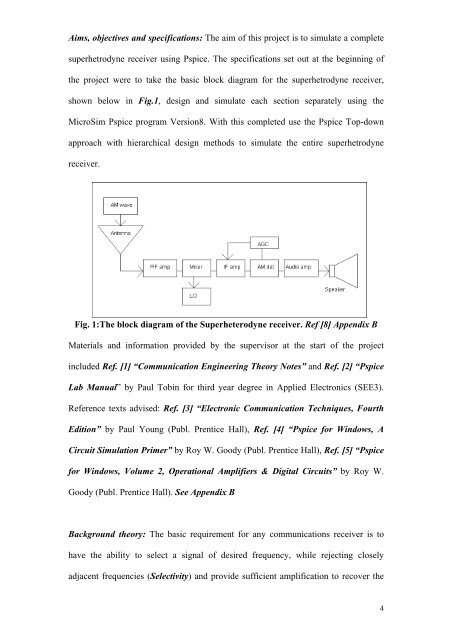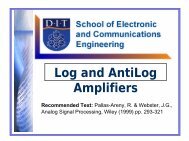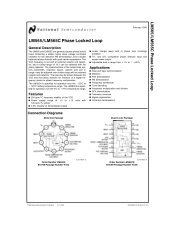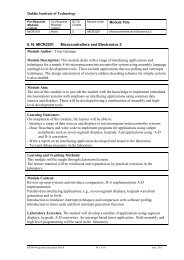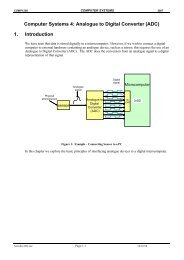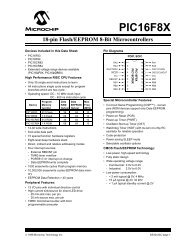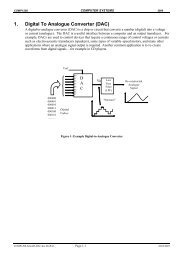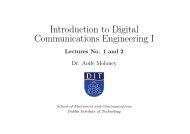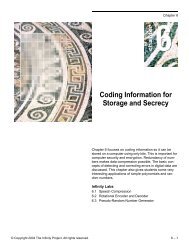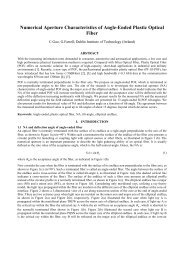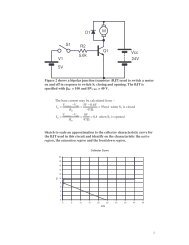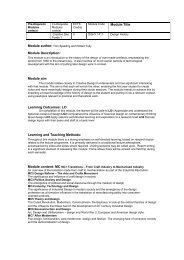simulation of a superheterodyne receiver using pspice - School of ...
simulation of a superheterodyne receiver using pspice - School of ...
simulation of a superheterodyne receiver using pspice - School of ...
You also want an ePaper? Increase the reach of your titles
YUMPU automatically turns print PDFs into web optimized ePapers that Google loves.
Aims, objectives and specifications: The aim <strong>of</strong> this project is to simulate a complete<br />
superhetrodyne <strong>receiver</strong> <strong>using</strong> Pspice. The specifications set out at the beginning <strong>of</strong><br />
the project were to take the basic block diagram for the superhetrodyne <strong>receiver</strong>,<br />
shown below in Fig.1, design and simulate each section separately <strong>using</strong> the<br />
MicroSim Pspice program Version8. With this completed use the Pspice Top-down<br />
approach with hierarchical design methods to simulate the entire superhetrodyne<br />
<strong>receiver</strong>.<br />
Fig. 1:The block diagram <strong>of</strong> the Superheterodyne <strong>receiver</strong>. Ref [8] Appendix B<br />
Materials and information provided by the supervisor at the start <strong>of</strong> the project<br />
included Ref. [1] “Communication Engineering Theory Notes” and Ref. [2] “Pspice<br />
Lab Manual” by Paul Tobin for third year degree in Applied Electronics (SEE3).<br />
Reference texts advised: Ref. [3] “Electronic Communication Techniques, Fourth<br />
Edition” by Paul Young (Publ. Prentice Hall), Ref. [4] “Pspice for Windows, A<br />
Circuit Simulation Primer” by Roy W. Goody (Publ. Prentice Hall), Ref. [5] “Pspice<br />
for Windows, Volume 2, Operational Amplifiers & Digital Circuits” by Roy W.<br />
Goody (Publ. Prentice Hall). See Appendix B<br />
Background theory: The basic requirement for any communications <strong>receiver</strong> is to<br />
have the ability to select a signal <strong>of</strong> desired frequency, while rejecting closely<br />
adjacent frequencies (Selectivity) and provide sufficient amplification to recover the<br />
4


